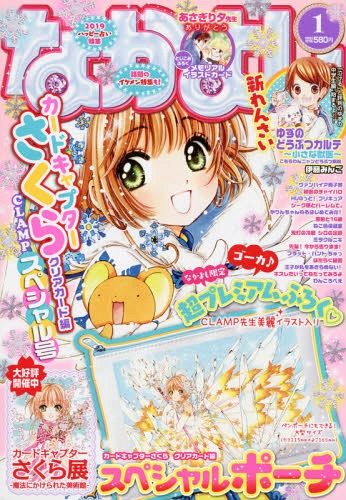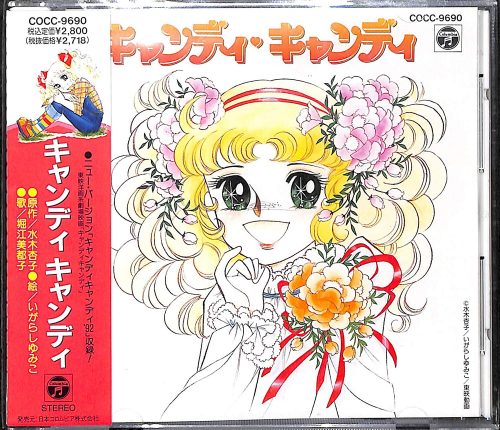
When it comes to the rather dominant Shounen genre, there are many big name publications that weekly or monthly publish a new chapter. Such publications include Shounen Jump, Shounen Sunday, Young Magazine, and Shounen Magazine. What about Shoujo manga such as Sailor Moon? Well, that’s what Nakayoshi, or a Japanese word for “friendly” or “good friend” comes in. So, how did they become one of the biggest names in Shoujo? Read our History of Nakayoshi to find out!
1955-1970s
The beginnings of Nakayoshi can be traced back to the beginning of anime and manga itself. The first issue debuted in December 1954, despite the label of January 1955. Think of it as the equivalent to when the first Superman comic book has a June 1938 label but in reality, it was released in April of 1938. Not only did the magazine debut with a bit Shoujo manga, it also included simple picture stories that you find in children’s books, stickers, and fan club news. It also included postcard pictures of famous celebrities at the time, stickers with scents, and other goodies. Like today’s manga publications, it was the ultimate reference to pop culture, which tended to be the focus. Some of the titles that debuted in the first year of its publication were Anna no Mita Koto by Mio Uchino, Boku-chan Tanteichou by Akikaze Onodera, and Kumi wa Nakanai by Wachsan Pei.
It didn’t become a 100% manga centered publication until 1958. Around that time, Osamu Tezuka happened to contribute a manga to Nakayoshi, Futago no Kishi, a sequel to Ribon no Kishi which was serialized in another publication. The following decade, he also published Angel no Oka through Nakayoshi as well. However, it got much bigger in the seventies with Kyoko Mizuki’s Candy Candy, which became the start of the modern Shoujo era. While coming of age stories are common throughout Shoujo then and now, Candy Candy was the first to popularize it for the mainstream in Japan. What also made it unique is that it used a historical setting of pre-World War I, and specific time settings would also be used in other big name Shoujo titles in the coming years.
1980s-1990s (Reinventing and Popularizing the Shoujo Genre Worldwide)
Thanks to the success of Candy Candy, Nakayoshi became progressively more popular than ever and some of their titles were finally getting the anime treatment, most notably with Candy Candy and Ohayou! Spank. Yoshio Irie, the editor-in-chief of Nakayoshi between the 1980s and 1990s, took the magazine in a different direction by encouraging more fantasy and comedy oriented titles as opposed to romance oriented ones. One of the first titles to embrace this was Kingyou Chuuihou, or Goldfish Warning in 1989. A couple of years later, Sailor Moon debuted and much of the staff of the Kingyou Chuuihou anime series happened to work on Sailor Moon’s anime. Thanks to the success of these two titles, Nakayoshi reached new heights they could never expect.
Not only did Sailor Moon solidify the legacies of Nakayoshi and Naoko Takeuchi, it reinvigorated the Shoujo genre. Shortly after the success of Sailor Moon, Nakayoshi would then publisher other super heroine stories such as Magic Knight Rayearth and Cardcaptor Sakura.
Present Day
After the prime of Sailor Moon, Nakayoshi once again fell to a distant second to one of Shoujo’s other big name publications, Ribon. But after 2010, it managed to regain its footing as the top dog of Shoujo manga. As of 2015, they even sell their publications in electronic format for those with tablets to enjoy. Though the days of Sailor Moon are long gone (unless Takeuchi decides to make a new story), CLAMP presently is once again publishing the Crystal Card-hen of Cardcaptor Sakura. In addition to the newest incarnation of Cardcaptor Sakura, some other present Nakayoshi stories you can take a peak at also include Watashi ni xx Shinasai, Wakamen, Taichi-Sentai wa Zuru Sugimasu, and Deguchi Zero.
Final Thoughts

Nakayoshi has a unique history of Shoujo manga with contributions that still continue to this day. If you get a Nakayoshi manga at a convenience store or bookstore in Japan, then you’re still going to get special goodies! Though you can get them digitally now, you still don’t those bonuses. Thanks to Yoshio Irie’s contributions during his time, he brought international attention to the titles they published, most notably Sailor Moon. For awhile, just like how Shounen Jump has their own international editions in other nations, Nakayoshi briefly had their own as well. It will no doubt be hard for Nakayoshi to find something that could surpass Sailor Moon, their serialization to the Pretty Cure manga has filled the job in Japan. Unfortunately, it has yet to find the international popularity that Sailor Moon achieved. Even so, it still continues to live up to its reputation of offering something different in comparison to other Shoujo publications.

